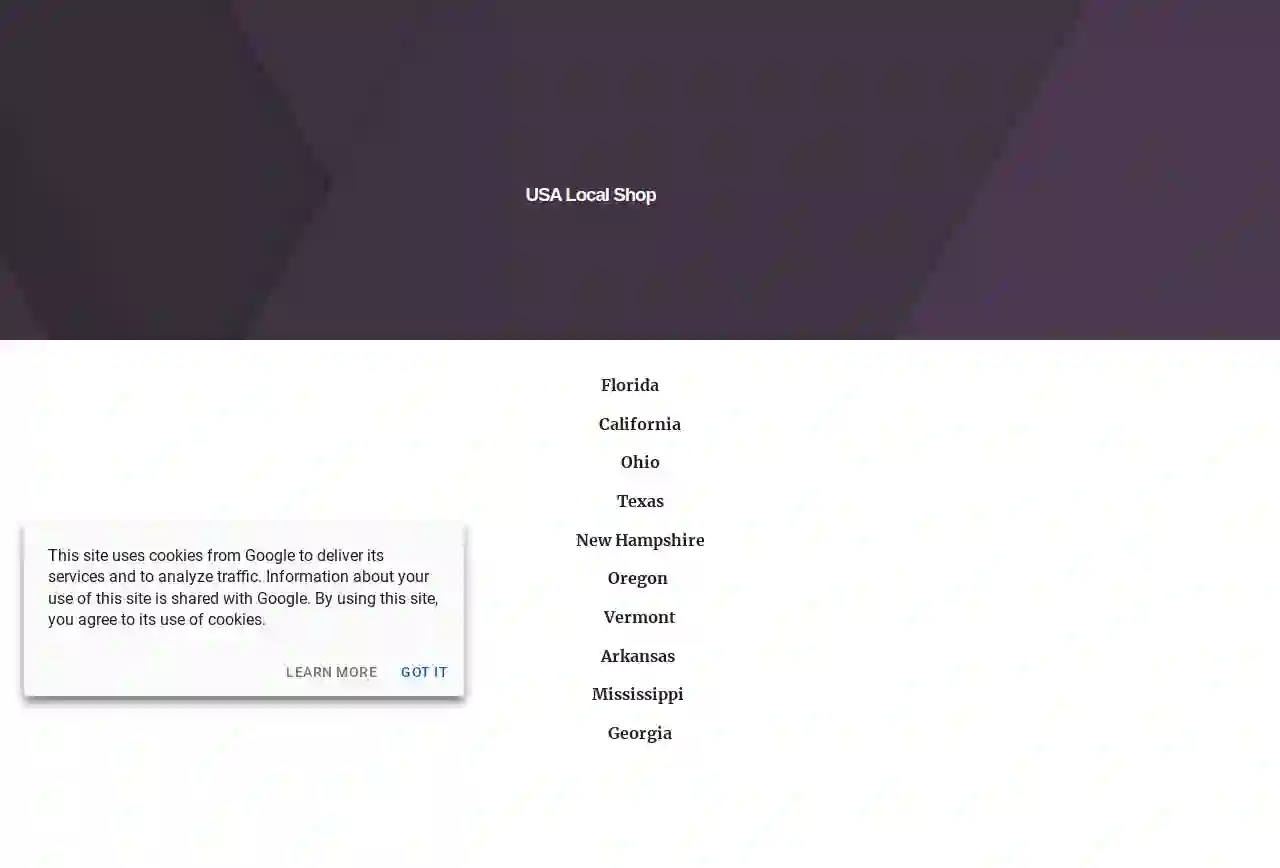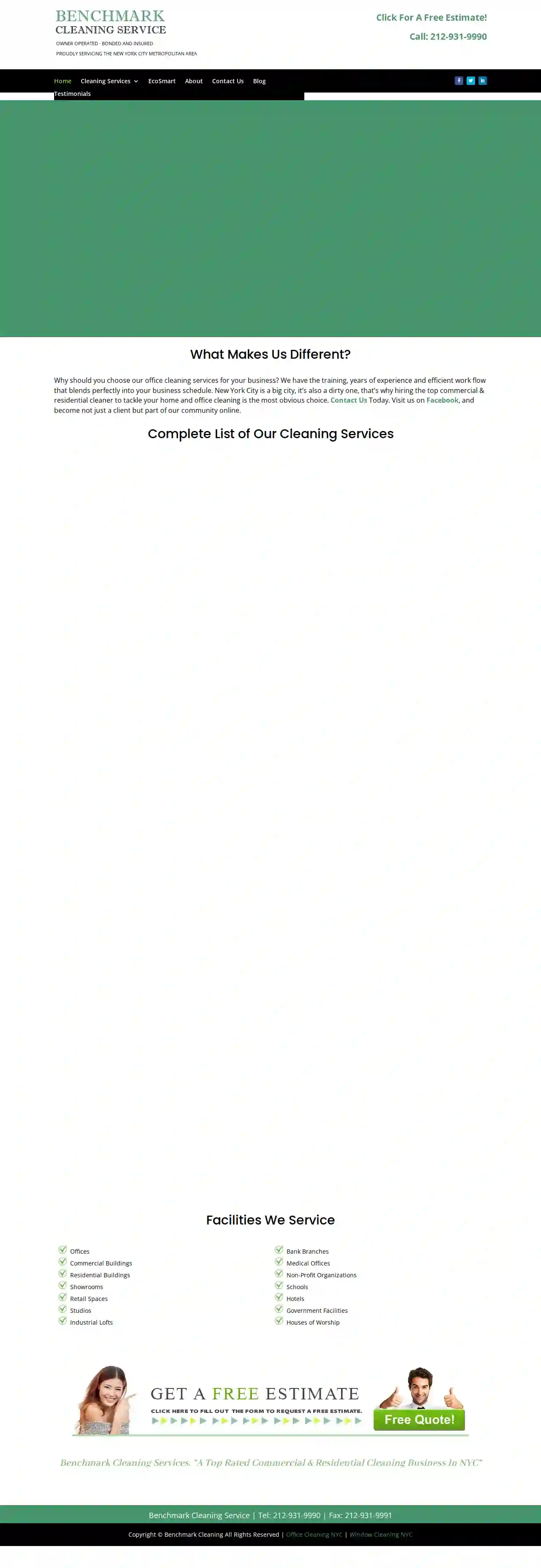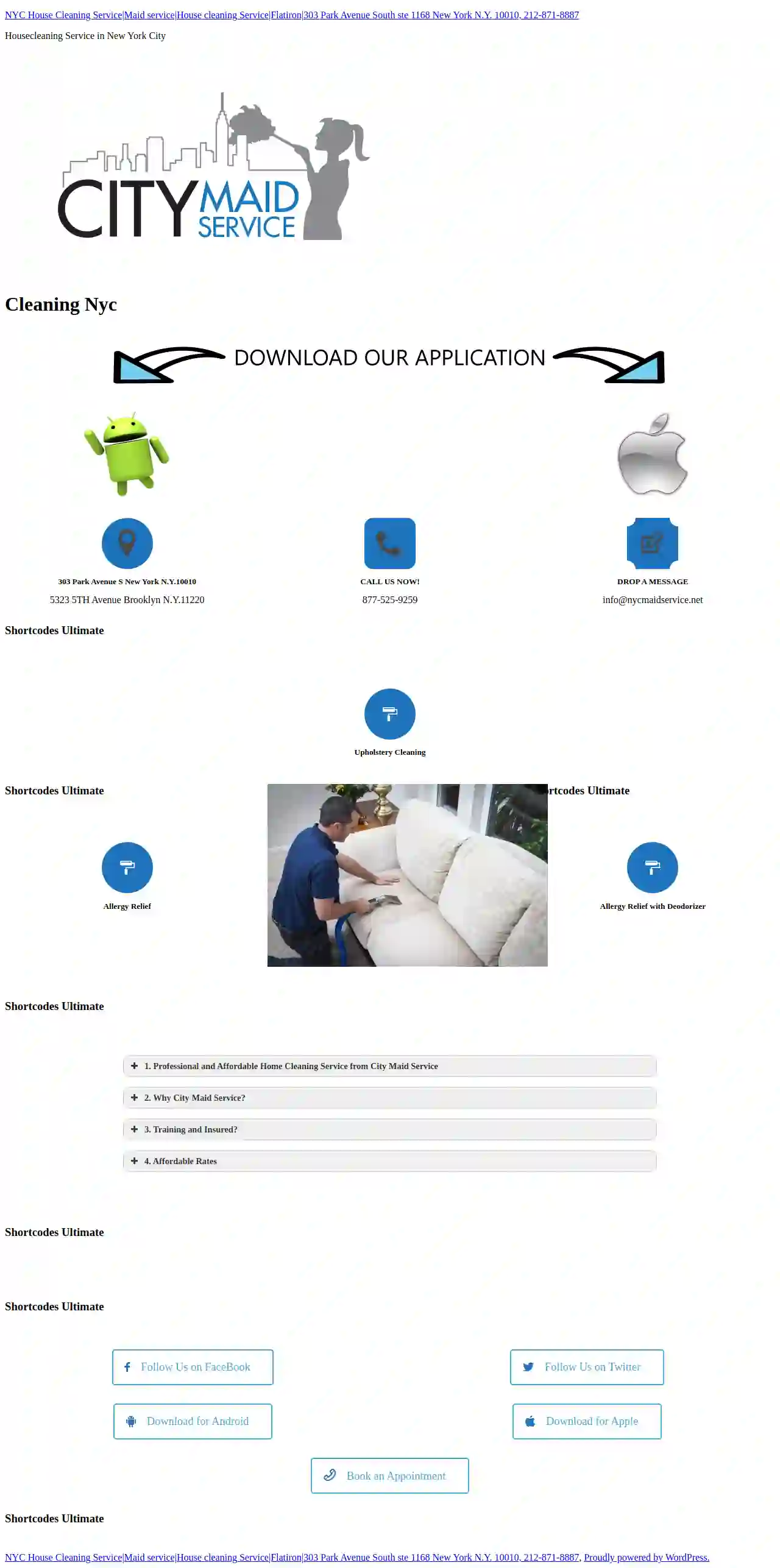Cleaning Services Tonganoxie
Find Local Cleaners in Tonganoxie
Get multiple Professional Cleaners quotes for your project today! Compare profiles, reviews, accreditations, portfolio, etc... and choose the best service.

White Glove Cleaner
4.927 reviews19th Floor #216, 55 5th Ave, New York, 10003, USWhite Glove Cleaner is a Manhattan-based cleaning company that goes far beyond ordinary cleaners. We focus on you, the client, in detail and with utmost attention to your needs and preferences. We pride ourselves on our wide array of services and are proud to retain happy repeat customers for life. Our team is made of the most talented house cleaners who have each been individually vetted and background-checked, ensuring the safety of your family, your employees, and yourself. We provide our own cleaning products and tools to save you time and money compared to purchasing your own equipment. Additionally, if you’re concerned about allergies or sensitivities, we offer a special “green cleaning” service using effective cleaners that are safe around kids and pets.
- Services
- Why Us?
- Accreditations
- Our Team
- Testimonials
- Gallery
Get Quote
A Nu-Glow Professional Cleaning Service LLC
4.47 reviews117 E 2nd St N, Wichita, 67202, USWelcome to ANUGLOWPCS.COM, a locally owned and operated business dedicated to providing top-notch cleaning services to residential and commercial clients. With over 10 years of experience, we take pride in our commitment to honesty, integrity, and excellent customer service. Our team of fully trained cleaning technicians is equipped to handle any environment, ensuring a clean and safe space for our clients. We offer a range of services, including deep cleaning, janitorial cleaning, floor care, power washing, and construction/make-ready cleanup. We customize our services to meet the specific needs of our clients, providing daily, weekly, and bi-weekly schedules. Contracts are welcome, and we strive to provide quality, reliable cleaning services every time.
- Services
- Why Us?
- Gallery
Get Quote
Tristate American Cleaning Service
4.18 reviews535 5 Ave 4 floor, New York, NY, USWHO ARE WE? One payment, multiple cleaning solutions. Tristate American Cleaning Service Corporation is simply the most professional, knowledgeable, and experienced cleaning company you will find servicing your area, with a variety of services to suit all your needs, whether commercial or residential. TSA is a company that is honest, qualified and competent, with employees who are upbeat and have a great deal of experience and an innate understanding of their craft. If you're looking to make a great impression, start with a clean space. Our team will help you achieve that professional and polished look you desire
- Services
- Why Us?
- Testimonials
- Gallery
Get Quote
Alpha Cleaning Solutions
4.86 reviewsKansas City, US- Services
- Why Us?
Get Quote
ServiceMaster DSI - Wichita
4.644 reviewsWichita, US- Services
- Why Us?
- Gallery
Get Quote
Harris' Dream Clean
4.517 reviewsWichita, US- Services
- Why Us?
- Gallery
Get Quote
Benchmark Cleaning Service
56 reviewsManhattan, US- Services
- Why Us?
- Gallery
Get Quote
The Cleaning Authority
4.9200 reviewsWichita, US- Services
- Why Us?
- Gallery
Get Quote
City Maid Service Manhattan
3.812 reviewsManhattan, US- Services
- Why Us?
- Gallery
Get Quote- Pr
Prestige Cleaning Solutions, LLC
512 reviewsKansas City, US- Services
- Why Us?
Get Quote
Over 60,241+ Janitorial Businesses in our network
Our janitorial service providers operate in Tonganoxie & beyond!
CleaningMatch has curated and vetted Top Cleaning Companies in Tonganoxie. Find a top & reliable pro today.
Frequently Asked Questions About Cleaning Services
- Residential Cleaning: Covers cleaning homes, apartments, and other living spaces.
- Commercial Cleaning: Focuses on cleaning offices, retail stores, and other business establishments.
- Deep Cleaning: A thorough and intensive cleaning that covers areas often neglected during regular cleaning.
- Move-In/Move-Out Cleaning: Comprehensive cleaning performed before or after moving into or out of a property.
- Post-Construction Cleaning: Specialized cleaning after construction or renovation projects to remove debris and dust.
- Specialized Cleaning: Includes services like carpet cleaning, window cleaning, upholstery cleaning, and more.
- Weekly: Suitable for busy households with children or pets, ensuring a consistently clean and healthy environment.
- Bi-weekly: A good option for smaller households or those who maintain a relatively clean home.
- Monthly: May be sufficient for individuals or couples who live a minimalist lifestyle.
- Quarterly or Annually: Can be suitable for deep cleaning or seasonal cleaning tasks.
- Using the wrong cleaning products: Certain cleaning products are unsuitable for specific surfaces. Using abrasive cleaners on delicate surfaces can cause scratches or discoloration.
- Not reading product instructions: Always read and follow the instructions on cleaning products to ensure proper usage and avoid potential hazards.
- Using dirty cleaning tools: Dirty cloths, sponges, and mops can spread germs and dirt instead of cleaning them. Rinse and sanitize your cleaning tools regularly.
- Skipping ventilation: Proper ventilation is essential when using cleaning products, especially those with strong fumes. Open windows and doors to allow fresh air circulation.
- Not allowing sufficient drying time: After cleaning, allow surfaces to dry completely to prevent mold and mildew growth, particularly in humid areas like bathrooms.
- Ignoring clutter: Clutter makes cleaning more difficult and time-consuming. Declutter regularly to maintain a cleaner and more organized home.
- Dishes: Load the dishwasher or wash dishes by hand.
- Sink: Clean the sink with a sponge or cloth and dish soap. Pay attention to the faucet and drain. You can also use a baking soda paste to remove stubborn stains.
- Countertops: Wipe down countertops with a disinfectant cleaner or all-purpose cleaner.
- Stovetop: Clean the stovetop with a degreaser or stovetop cleaner. Remove burner grates and wash them separately if needed.
- Oven: Clean the oven according to the manufacturer's instructions. You can use a self-cleaning function or a commercial oven cleaner.
- Microwave: Clean the microwave interior with a damp cloth or sponge. For stuck-on food, heat a bowl of water with lemon juice in the microwave for a few minutes to loosen debris.
- Refrigerator: Wipe down the refrigerator shelves and drawers with a damp cloth or sponge. Remove any expired food and clean spills promptly.
- Floors: Sweep or vacuum the floor, then mop with a floor cleaner suitable for your kitchen floor type.
- Trash: Empty the trash can and recycling bin.
What are the different types of cleaning services?
The best type of cleaning service depends on your specific needs, the size and condition of the property, and your budget.
How often should I have my house cleaned?
You can adjust the frequency based on your needs and budget. Some people opt for weekly cleaning for high-traffic areas like kitchens and bathrooms and bi-weekly cleaning for the rest of the house.
What are some common cleaning mistakes to avoid?
By avoiding these common cleaning mistakes, you can improve your cleaning efficiency and achieve better results.
What is the most efficient way to clean a kitchen?
Regularly cleaning your kitchen helps maintain a hygienic and organized space for cooking and dining.
What are the different types of cleaning services?
- Residential Cleaning: Covers cleaning homes, apartments, and other living spaces.
- Commercial Cleaning: Focuses on cleaning offices, retail stores, and other business establishments.
- Deep Cleaning: A thorough and intensive cleaning that covers areas often neglected during regular cleaning.
- Move-In/Move-Out Cleaning: Comprehensive cleaning performed before or after moving into or out of a property.
- Post-Construction Cleaning: Specialized cleaning after construction or renovation projects to remove debris and dust.
- Specialized Cleaning: Includes services like carpet cleaning, window cleaning, upholstery cleaning, and more.
The best type of cleaning service depends on your specific needs, the size and condition of the property, and your budget.
How often should I have my house cleaned?
- Weekly: Suitable for busy households with children or pets, ensuring a consistently clean and healthy environment.
- Bi-weekly: A good option for smaller households or those who maintain a relatively clean home.
- Monthly: May be sufficient for individuals or couples who live a minimalist lifestyle.
- Quarterly or Annually: Can be suitable for deep cleaning or seasonal cleaning tasks.
You can adjust the frequency based on your needs and budget. Some people opt for weekly cleaning for high-traffic areas like kitchens and bathrooms and bi-weekly cleaning for the rest of the house.
What are some common cleaning mistakes to avoid?
- Using the wrong cleaning products: Certain cleaning products are unsuitable for specific surfaces. Using abrasive cleaners on delicate surfaces can cause scratches or discoloration.
- Not reading product instructions: Always read and follow the instructions on cleaning products to ensure proper usage and avoid potential hazards.
- Using dirty cleaning tools: Dirty cloths, sponges, and mops can spread germs and dirt instead of cleaning them. Rinse and sanitize your cleaning tools regularly.
- Skipping ventilation: Proper ventilation is essential when using cleaning products, especially those with strong fumes. Open windows and doors to allow fresh air circulation.
- Not allowing sufficient drying time: After cleaning, allow surfaces to dry completely to prevent mold and mildew growth, particularly in humid areas like bathrooms.
- Ignoring clutter: Clutter makes cleaning more difficult and time-consuming. Declutter regularly to maintain a cleaner and more organized home.
By avoiding these common cleaning mistakes, you can improve your cleaning efficiency and achieve better results.
What is the most efficient way to clean a kitchen?
- Dishes: Load the dishwasher or wash dishes by hand.
- Sink: Clean the sink with a sponge or cloth and dish soap. Pay attention to the faucet and drain. You can also use a baking soda paste to remove stubborn stains.
- Countertops: Wipe down countertops with a disinfectant cleaner or all-purpose cleaner.
- Stovetop: Clean the stovetop with a degreaser or stovetop cleaner. Remove burner grates and wash them separately if needed.
- Oven: Clean the oven according to the manufacturer's instructions. You can use a self-cleaning function or a commercial oven cleaner.
- Microwave: Clean the microwave interior with a damp cloth or sponge. For stuck-on food, heat a bowl of water with lemon juice in the microwave for a few minutes to loosen debris.
- Refrigerator: Wipe down the refrigerator shelves and drawers with a damp cloth or sponge. Remove any expired food and clean spills promptly.
- Floors: Sweep or vacuum the floor, then mop with a floor cleaner suitable for your kitchen floor type.
- Trash: Empty the trash can and recycling bin.
Regularly cleaning your kitchen helps maintain a hygienic and organized space for cooking and dining.